FULL TRANSCRIPT
There is a shortage of mine-protected vehicles. Why doesn’t the government import the vehicles for the time being and make up the shortage so that our jawans do not lose their lives because of unprotected vehicles?
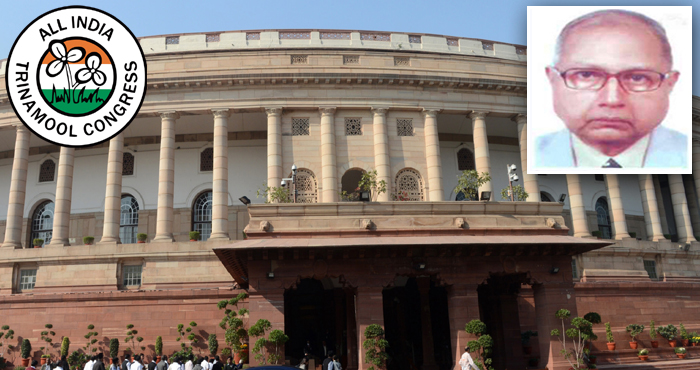
FULL TRANSCRIPT
There is a shortage of mine-protected vehicles. Why doesn’t the government import the vehicles for the time being and make up the shortage so that our jawans do not lose their lives because of unprotected vehicles?
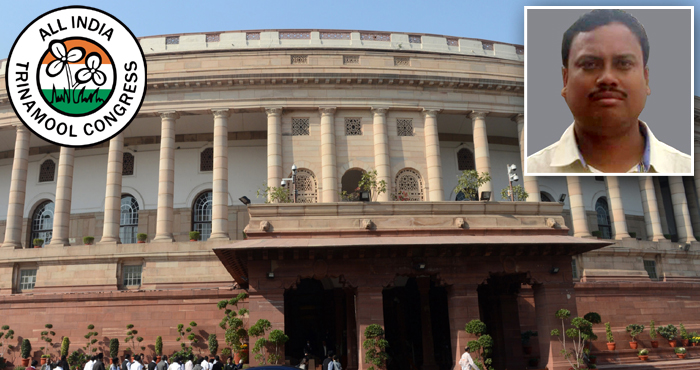
FULL TRANSCRIPT
The BSNL network is poor not only in LWE areas, but in almost every State of the country, specially in rural and border areas, including my constituency Cooch Behar. In this online age, day to day work both in public and private sector (specially in banking sector, education sector and various online services like salary submission, scholarship and other activities) are hampered due to poor network of BSNL. And there is a common tendency to use other networks instead of BSNL.
My question, through you, to the Minister is what is the government’s initiative to provide smooth and secured BSNL network throughout the country, specially in rural and border areas.
The Ministry of Human Resources Development is going to launch a new e-based education system. For the success of this programme the online network should be ensured in the rural areas. What is the government’s initiative in this regard?
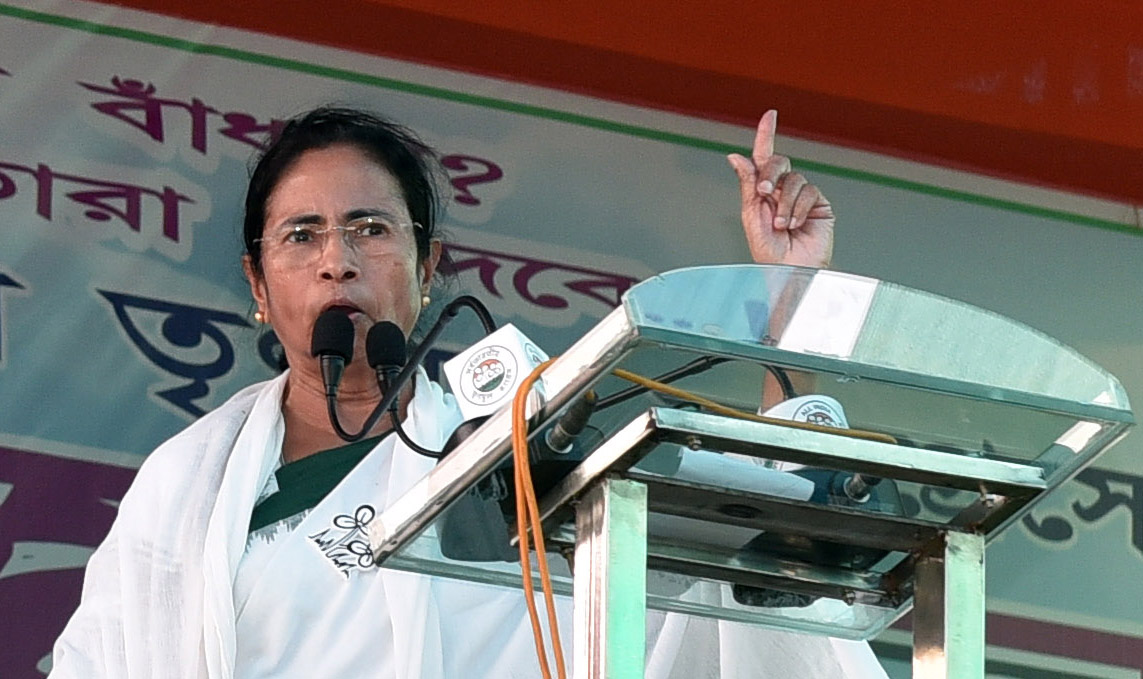
West Bengal Chief Minister Mamata Banerjee inaugurated the fourth unit of the Sagardighi Thermal Power project among many others and lay foundation stones for a bouquet of projects from a public meeting at Domkal, Murshidabad, today.
The Bengal Chief Minister inaugurated numerous developmental projects including a SNCU, primary health centres, an ITI, road projects, girls’ hostels, drinking water projects, a Karma Tirtha and a Patha Sathi. She laid foundation stones for projects including the fifth unit of the Sagar Dighi Thermal Power project, Karmatirthas, road projects, primary health centres, school buildings among others.
CM distributed cycles under Sabuj Sathi and other benefits like Kanyashree, Sikshashree, Yubashree, Sabushree, Sasthya Sathi, agricultural machinery, Gatidhara and other such projects.
Highlights of her speech:
আজ মুর্শিদাবাদের ডোমকলে একটি জনসভা করেন মুখ্যমন্ত্রী মমতা বন্দ্যোপাধ্যায়। সভামঞ্চ থেকে সাগরদিঘি তাপবিদ্যুৎ কেন্দ্রে ৬৬০ মেগাওয়াটের চতুর্থ ইউনিট সহ একগুচ্ছ প্রকল্পের উদ্বোধন ও শিলান্যাস করেন মুখ্যমন্ত্রী।
জঙ্গিপুরে নার্সিং ট্রেনিং স্কুল, কুলি মোড় থেকে মোড়গ্রাম পর্যন্ত রাস্তা সংস্কার, ডোমকলে পুরভবন নির্মাণ, জেলাপরিষদের ১৩৬ কিলোমিটার রাস্তা, নওদার আমতলায় জলঙ্গি নদীর উপর সেতু নির্মাণ, ডোমকলে গোরস্থানে সীমানাপ্রাচীর দেওয়া, শ্মশানে বৈদ্যুতিন চুল্লি বসানো প্রভৃতি সহ প্রায় ১৭০টি প্রকল্পের শিলান্যাস করেন তিনি। এছাড়া বেশ কিছু গ্রামীণ রাস্তা, পানীয় জল প্রকল্প, কর্মতীর্থ, স্কুল সহ প্রায় ৭৫টি প্রকল্পের উদ্বোধনও করেন মুখ্যমন্ত্রী।
এছাড়া সবুজ সাথী, কন্যাশ্রী, শিক্ষাশ্রী, যুবশ্রী, সবুজ সাথীর সাইকেল, প্রাণী মিত্র, গীতাঞ্জলী, শিল্পীদের ক্রেডিট কার্ড, ট্রাক্টর, কৃষি যন্ত্রপাতি সহ আরও অনেক সুযোগ সুবিধা প্রদান করেন মুখ্যমন্ত্রী মমতা বন্দ্যোপাধ্যায়।
তাঁর বক্তব্যের কিছু বিষয়ঃ
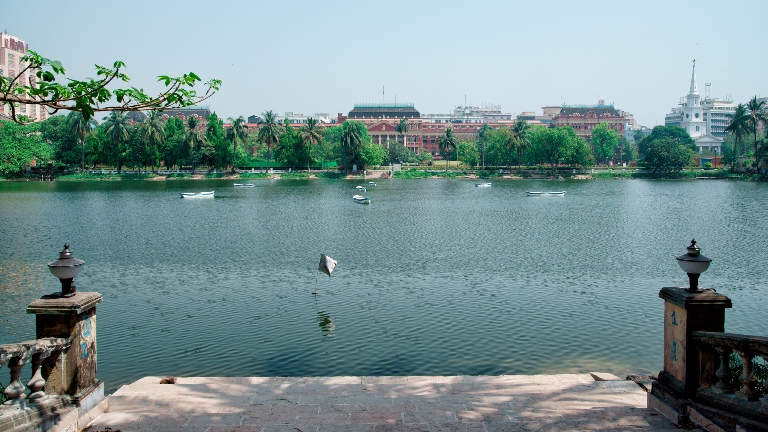
After the Park Street carnival, citizens will now have a weekend cultural fiesta at Laldighi. From April 15, the heritage waterbody adjacent to Writers’ Buildings will be an attractive venue to spend weekends. Kolkata Municipal Corporation officials are giving the finishing touch to project.
According to plans, the KMC along with state tourism and culture and information departments will throw open a space beside the waterbody (opposite GPO) for the carnival. Here, tourists or locals will enjoy theatre, soiree or other cultural functions. A makeshift stage will be erected in the arena to accommodate artists or theatre groups for their weekend performances.
The KMC has given a facelift to the waterbody to attract tourists. Like Monohardas Tarag, a waterbody in Esplanade area, the civic body has installed six colour fountains which will be operational from evening. The trees around Laldighi will be decorated with lights as an added attraction.
Mayor Sovan Chatterjee on Monday said the weekend carnivals at Laldighi will be one of the most crowd-pulling events of the city. “We will make sure people who will go to the spot to enjoy the weekend won’t be disappointed. Keeping in mind BBD Bagh’s status as a world heritage zone, we have arranged everything which won’t dampen the heritage sprit of the area,“ the Kolkata Mayor said.
পার্ক স্ট্রিট কার্নিভালের পর এবার রাজ্যবাসীর জন্য সপ্তাহ শেষে লালদিঘিতে হবে সাংস্কৃতিক অনুষ্ঠান ‘দেখো-রে’। ১৫ই এপ্রিল থেকে রাইটার্স বিল্ডিং সংলগ্ন এই ঐতিহাসিক জলাশয় হয়ে উঠবে আকর্ষণীয়। কলকাতা কর্পোরেশন এখন লালদিঘির এই নতুন রূপদানের প্রকল্প চূড়ান্ত লগ্নে।
এই উদ্দেশ্যে কলকাতা কর্পোরেশন, রাজ্য পরিবহণ দপ্তর ও তথ্য ও সংস্কৃতি দপ্তরের সঙ্গে জিপিও’র বিপরীতে লালদিঘির পাশে একটি মুক্তমঞ্চ তৈরি করছে। এখানে রাজ্যবাসী ও পর্যটকরা বাউল গান, পুরুলিয়ার ছৌনাচ, ধামসা মাদল সহ বিভিন্ন সাংস্কৃতিক অনুষ্ঠান উপভোগ করতে পারবেন। কুশলীদের মঞ্চটি তৈরী করা হবে লালদিঘির ওপর। এই অনুষ্ঠানগুলি মঞ্চস্থ হবে সারা বছর প্রতি সপ্তাহের শনি ও রবিবার। অনুষ্ঠানের সময় বিকেল ৬টা থেকে রাত ১১টা ।
লালদিঘির পাশের গাছগুলিতে আলো লাগানো হয়েছে। লালদিঘির ৬টি বোটকেও দেওয়া হয়েছে আলোকসজ্জা। অনুষ্ঠান দেখতে পারবেন যে কেউ সম্পূর্ণ বিনামুল্যে। থাকবে ১৫টি খাবারের স্টল সহ বিশ্ববাংলার স্টলও থাকবে লালদিঘির চত্তর জুড়ে। আনুমানিক ৪০০টি গাড়ি পার্কিং এর বন্দোবস্তও থাকবে এখানে।
কলকাতার মেয়র শোভন চ্যাটার্জি বলেন, লালদিঘি ঘিরে সপ্তাহান্তের এই অনুষ্ঠান কলকাতার একটি অন্যতম আকর্ষণ হয়ে উঠতে চলেছে। “আমরা নিশ্চিত করব যে সকল মানুষ সপ্তাহান্তে ওখানে যাবেন, তারা যাতে হতাশ না হন। বিবাদি বাগের ঐতিহাসিক গুরুত্বের কথা মাথায় রেখে আমরা সবকিছু এমন ভাবে আয়োজন করেছি যাতে ওই অঞ্চলের ঐতিহ্যের কোনও ক্ষতি না হয়।”
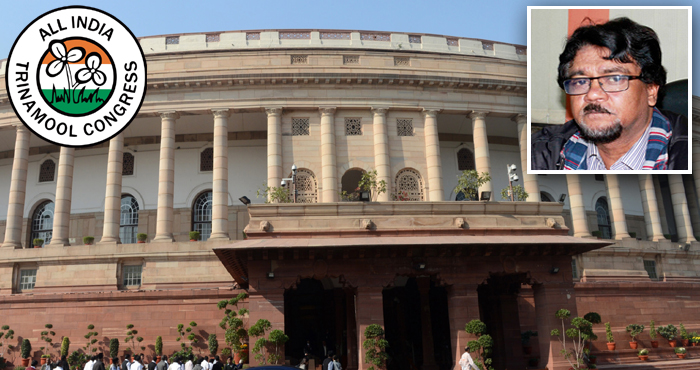
FULL TRANSCRIPT
In the 19th century, when organized labour first compelled factory owners to limit workdays to 10 (and then eight) hours, management was surprised to discover that output actually increased – and that expensive mistakes and accidents decreased. This experiment was later repeated over a century later by Harvard Business Review, it still held true. And there have been similar studies done across the globe which have found out that working more than 10-12 hours actually reduces productivity and output.
Now this Bill seeks to increase the overtime limit of factory workers from 50 hours to 100 hours in a quarter. Increase the overtime working hours for factories with “exceptional” workload from 75 hours to 115 hours in a quarter. And the Centre or States, or Chief Inspector with the prior approval of the State Government may increase this overtime limit to 125 hours in a quarter in “public interest.”
However, there are certain basic problems with the provisions of this Bill.
Why such haste: The Factories (Amendment) Bill, 2014 is already under consideration, the Standing Committee has submitted its report. What is the rationale behind trying to amend only Sections 64 and 65 as a fresh Bill in such a hasty manner?
Overtime hours: “Public interest” has not been defined in the Bill. This could lead to arbitrary decisions on increasing overtime hours. The increase in overtime hours will also drive down fresh recruitment. Stakeholders have not been taken into confidence before introducing this Bill. Not a single trade union of West Bengal is in favour of increasing the overtime in this way. It is true that many countries have extended overtime hours and the ILO has also suggested increasing overtime hours. But we must look at the reality. Working conditions in Indian factories are not at par with their Western counterparts. The ILO’s recommendation is neither mandatory nor compulsory. First and foremost, we have to keep the health and safety issues of our workers in mind.
Blow to Federalism: The 1948 Act vested the power of framing rules and implementation to the State Government. This Bill seeks to change that, and rests decision making powers with the “Central Government or, as the case may be, the State Government”. The clause ‘as the case may be’ is ambiguous and has not been defined. This could lead to the Centre taking unilateral decisions without consulting the States. This is an attempt to interfere with the federal structure and dilute the power of the States.
It is anti-worker: The Objects and Reasons of the Bill states that the “need for increasing the total number of hours of work on overtime in quarter is based on the demand from industries”. Thus it is clear that the Government is overlooking the basic provision related to the health of the worker, and working towards the benefit of industrialists who would gain from this provision. This is an anti-labour and anti-worker Bill.
It must be noted that the government is also planning to introduce the Small Factories Bill, where units employing less than 40 workers will be exempted from ESI and PF requirements. This is akin to taking away their only means of social security.
There are roughly 100 million workers in India in the manufacturing sector alone. Squeezing the already marginalized workers makes little sense. We need to bring in a comprehensive legal framework to safeguard the rights and interests of all workers, instead of trying to pass Bills in this piece-meal manner.

FULL TRANSCRIPT
The HIV and AIDS (Prevention and Control) Bill aims to provide essential support to national AIDS control programme arresting new infection and thereby achieving the target of ending the epidemic by 2030 according to the sustainable development goals.
India has the third largest HIV epidemic in the world after South Africa and Nigeria.
As per the report of 2015, there are 21.17 lakh persons estimated to be living with HIV in India, out of which 6.54 percent accounts for children. The adult prevalence is in the range of 0.3 percent of which around 40 percent is women and estimated 48 thousand population died from AIDS related instances in 2015. However, at present India’s HIV epidemic is slowing down. In 2015, 44 percent of adult were eligible for antiretroviral treatment (ART) rising from 36 percent in 2013.
Despite the rise, in the number of people on ART remain slow. The introduction of new 2013 World Health Organisation treatment guideline has more people eligible for antiretroviral treatment. Focussing treatment at patients is to be the priority area.
The Bill highlights the provisions to safeguard the rights of the people living with HIV and affected by HIV. It also lists various grounds on which discriminations against HIV positive persons and those living with them is prohibited.
These include the denial, termination, discontinuation or unfair treatment with regards to employment, educational establishment, healthcare services, residing and renting property, standing for public and private office and provision of insurance. The requirement for HIV testing as requisite for obtaining employment or accessing healthcare is also prohibited. The Bill seeks to provide legislative framework of the existing state of non-discrimination against people living with HIV and AIDS.
Alongside, the aim is also to enhance the legal accountability and establish formal mechanism for the grievances. Under this Bill, every HIV infected or affected person below the age of 18 has the right to reside in shared household and enjoy the facilities of household. The Bill prohibits any individual from publishing information and advocating feeling of hatred against HIV positive persons and those living with them. The Bill provides for the guardianship of minors. The Bill requires that no person shall be compelled to disclose his HIV status, except with the informed consent and if required, by a court order.
According to the Bill, the Central and State Governments should undertake measures to
The Bill makes the provision for the appointment of an ombudsman by the State Government. Cases relating to HIV positive persons shall be disposed off. Most of the recommendations made by the Standing Committee on Health and Family Welfare were undertaken into the Bill. Some amendments were suggested during the discussion in the Rajya Sabha. Medically advised safeguards and precautions should be adopted to minimise the risks of infection from HIV positive persons, which shall not amount to discrimination. Central and State Government should formulate schemes to address the needs of all protected people under the Bill as opposed to only the HIV and AIDS-affected women and children. In the case of an emergency, the ombudsman will pass an order within 24 hours; otherwise the ombudsman shall pass an order within a period of 30 days.
The Bill, in a way, is a landmark Bill as it extends the first-ever explicit legal endorsement in the case of a specific health condition, for people living with HIV and AIDS in our country. There cannot be two opinions about the exalted aims of the Bill. However, while the Bill and the amendments take important steps in the struggle of tackling HIV and AIDS, there are certain limitations which create further gaps in catering to the main aims of the Bill. The Bill brings a rights-based approach to AIDS treatment, making it imperative for both Central and State Governments to provide treatment as far as possible.
Number one, under Section 14 (10), though the Bill lays down that treatment is the right of the patient, it restricts its reach to convert it into a legal right. Thus a person with HIV and AIDS denied treatment cannot generally initiate any legal proceedings against government authorities.
Number two, the prevention programme does not look at how women’s bodies are different from men. Sexual violence heightens the risk of HIV transmission and infection, travelling from mother to child during pregnancy or breast-feeding. These are factors that deserve more attention.
A UNICEF report says that only 23% of pregnant women living with HIV undertook antiretroviral treatment in 2009 because of factors like social customs and family restriction. Even its report in 2015 highlights that 39.5% of HIV infected adults in India were women and that this was a growing proportion. While two years ago, it was reported that HIV prevalence for women who inject drugs is almost double than that of men.
The Bill fails to include provisions for the protection of people who are most vulnerable to contracting the disease, for instance, people frequently using contaminated injection equipments. Under Section 2 of the Bill, definition should have included vulnerable people. What is known as the most at risk population? We should include transgender women, men who have sex with men, female sex workers, people who inject drugs. Also proposed is the deletion of Clause 22 which relates to the strategies for reduction of risk of HIV transmission is needed as it protects the legality of the needle, syringe exchange.
Civil courts have the rights to fully address the employment and discrimination only in public sector. It is important that courts should be conferred power to address discrimination in private sector as well as to make it inclusive and effective.
The Bill does not illuminate on the legal dissonance between the provisions of non discriminations and other acts and case laws that discriminates against sex workers, homosexuals and transgenders.
In conclusion Sir, stigma attached to HIV-AIDS victims in India remains intense despite ongoing efforts of the government. The stigma is not only confined to social obstacle but, economic too. With the advent of the Bill, the first step has been initiated to stop the spread of disease and help those who have been infected by HIV, and AIDS, through ART.
Even if it can not do away with the stigma, the law offers a clear legal course also to successfully eradicate HIV and AIDS by 2030. The process would require a high degree of commitment and thus would equally require us to address the shortcomings. We should fill up the gaps and ensure a far-reaching impact of the Bill.
At the end Sir, I would like to mention what has been done by our West Bengal Chief Minister Mamata Banerjee. She has initiated a programme called Muktir Aalo for the sex workers, which includes skill development and vocational training.
Thank you Sir.
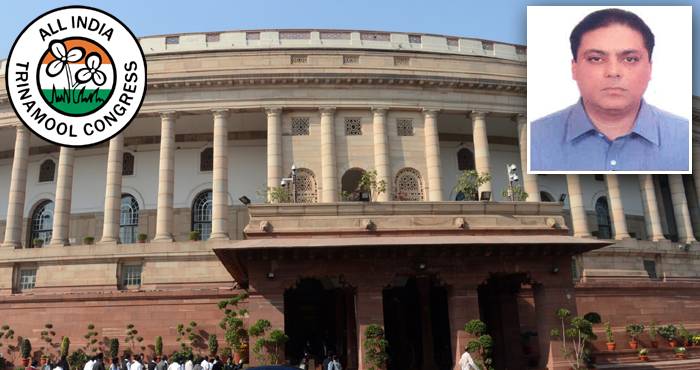
FULL TRANSCRIPT
Sir, West Bengal has inherited a huge debt burden after 34 years of CPI(M) misrule, before All India Trinamool Congress came to power. Sir, we have repeatedly requested the Centre to waive or restructure the loans.
When Shri Pranab Mukherjee, who was the Finance Minister in 2011, had understood the plight of the State and had allocated a package worth Rs 8,750 crore to develop 11 districts under BRGF. Under this scheme, the Centre still owes our State Rs 2,330 crore. The totally money that the Centre still owes to Bengal is Rs 10,469 crore. Even at the 11th Inter-State Council meeting, which happened in the National Capital last year, our Chief Minister had expressed that there ought to be <interruptions>
We feel, Sir, we are being discriminated against. Despite having 88 fast-track courts we are not getting any money but Gujarat, which has no such courts, has been given Rs 400 crore.
It is imperative that the concept of Special Category Status for States be continued. It is not only Bengal, other States like Punjab, Maharashtra and Jharkhand are also debt-stressed. The Centre must also release the funds at the earliest for the development of backward regions.
I would like to end with two lines, Sir:
Dusron par agar tapsara kijiye
Saamne aaina rakh liya kijiye.
Thank you, Sir.

FULL TRANSCRIPT
Sir, Cooch Behar district, my constituency, is 52% SC, 27% Muslim-minority populated. At the same time it is economically backward region; it is an agri-based district. There are no major industries.
Almost 3 lakh people who go to different States as labourers every year. Per capita credit and deposits are also not satisfactory in comparison to national average.
Under these circumstances, I demand that Cooch Behar district be included under the BRGF scheme.
Thank you, Sir.

FULL TRANSCRIPT
Sir, stadiums are an emotive issue in all the States, especially in the rural areas. I wanted to know from the Hon. Minister whether the new scheme that the Sports Ministry has taken up, Khelo India, includes stadiums and what is the budgetary outlay.
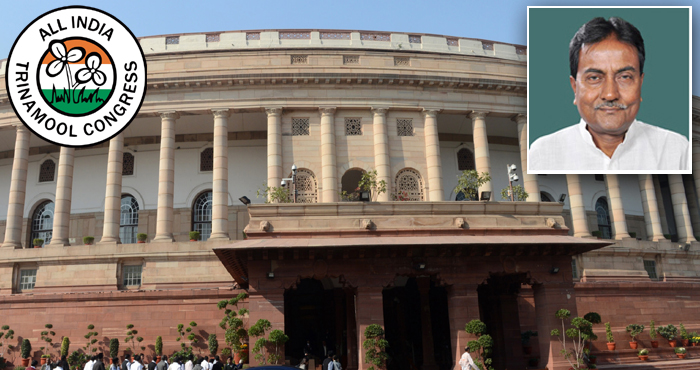
FULL TRANSCRIPT
It is very unfortunate that Central Government is preparing a cabinet note recommending for closure of several CPSUs of the country . NITI Aayog is preparing a roadmap for ailing public sector undertakings.and had earlier identified 26 sick Central Public Sector Enterprises (CPSEs) for closure, of which 7 received cabinet nod. These include Hindustan Cable, Tyre corporation, HMT Watches, Birds Jute and Export Limited (BJEL) and Central Inland Water Transport Corporation. It is very unfortunate that Niti Aayog has also identified 12 more CPSEs for strategic sale. whereas the Central Public Sector Enterprises (CPSEs) are meant to serve certain larger social causes.
117 years old Country’s first Pharmaceutical company Bengal Chemicals & Pharmaceuticals Works Ltd. is one of the prime listed of the Government to sale. Bridge and Roof Company who is on average profit of Rs 32.83 crore since last 6 years is also in the target of strategic disinvestment . Most surprisingly, special steel plant unit Alloy Steel Plant, the first Indian producer who adds muscle to the “Make in India” campaign for indigenous production of speciality products to meet defence needs are also in process of Strategic Sale plan of the Government. The fact is that all these three are from West Bengal.
Bridge & Roof Co. (I) Ltd . is serving the construction industry for more than ninety seven years with enviable track record in making profit years together, paying dividend to Government of India & never been fallen sick with constant positive growth with 1500+ permanent employees & 15000 + temporary employees & workers posted all over INDIA . Whereas Hindustan Newsprints is also a profitable and regular paying dividend in the central exchequer since last few years with a continuous profit of average Rs 9.24 crore since 2010.
Keeping in mind the necessity of the existence of Central Public Sector Organisations for addressing social causes and tremendous scope of direct and indirect employment dependency, I request the Central Government, the Finance Ministry to close the decision to close down the Public Sector Organisations of the country better to think for revival/restructure by conducting a well-organised comprehensive research study to identify the areas of business, where these units can successfully/profitably operate and grow.
In conclusion, I request the Government that there are still tremendous potential of industry in West Bengal, please do not ruin the ‘RHUR’ of Asia but make Bengal another gateway of Industrial renaissance.
আমি কেন্দ্রীয় সরকার ও মন্ত্রীদের অনুরোধ করব পশ্চিমবাংলা – যেখানে ঠাকুর শ্রী শ্রী রামকৃষ্ণ পরমহংসদেব জন্মগ্রহণ করেছেন, যেখানে স্বামী বিবেকানন্দ জন্মগ্রহণ করেছেন, যেখানে আশুতোষ মুখোপাধ্যায়ের মতো মানুষ জন্মগ্রহণ করেছেন – সেখানে বঞ্চনা যাতে দয়া করে না হয়।
I kindly request the Centre through you, Sir. Thank you.